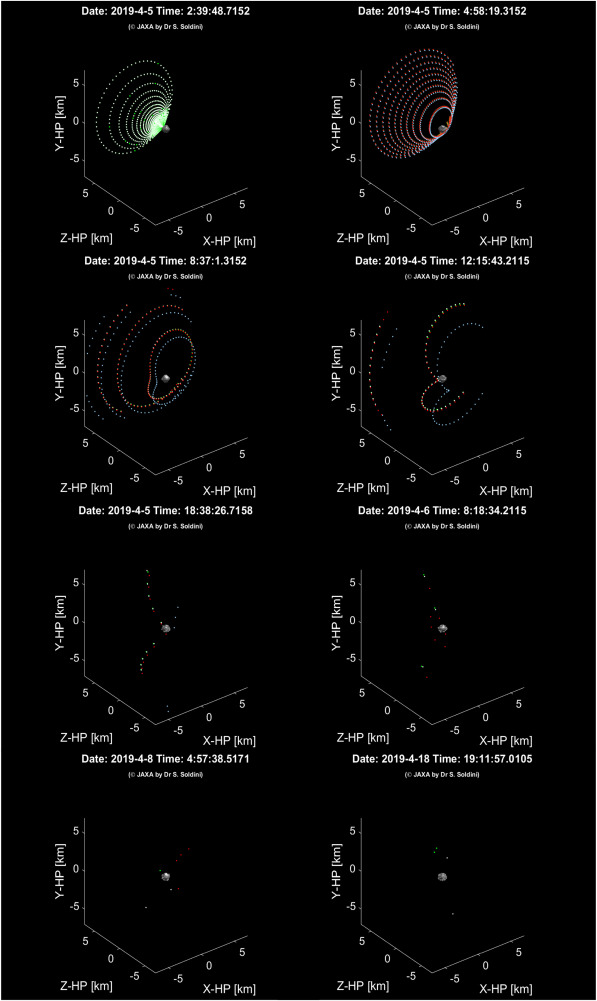Research

Origami Solar Sail Technology & Additive Manufacturing
The project is exploring Additive Manufacturing (AM) to prototype a new morphing origami solar sail mechanism for next generation of self-reconfigurable CubeSats. A solar sail is an origami thin, lightweight highly reflective membrane capable of harnessing the effect of the Sun radiation pressure. It enables fuel-free propulsion by reflecting the intensity of the sunlight. This project will demonstrate the feasibility of a new generation of origami solar sail’s membrane that, by changing its local surface reflectivity, will trigger shape reconfiguration for multi operational CubeSats.
EPSRC/Connecting Everything II Grant Ref: EP/S036113/1
PI Dr Stefania Soldini, University of Liverpool
CoI Dr Paolo Paoletti, UoL
Partners:
Dr Juan Reveles, Oxford Space Systems
Dr Stephane Bonardi, Dr Naoya Ozaki, Dr Ahmed Sugihara, Prof Osamu Mori, JAXA
Keywords: Self-folding Origami Robots; Additive Manufacturing, Solar Sails

Asteroids and minor celestial bodies
• Developing GNC algorithms for spacecraft-asteroids proximity operations.
• Radio science expertise in particular in gravity modelling from shape model, spherical harmonics and Mascons.
• Interested in studying non-uniform density asteroids and their gravitational anomalies.
• Derived a generalised semi-analytical method to compute periodic orbits around the 1:1 resonances of non-uniform density asteroids.
• Looking for interfacing impact physics with astrodynamics through Mascon-SPH gravity models
• Working on interior and exterior gravity fields to determine Mascons distribution from high-fidelity models (e.g. polyhedron, stockes coefficient or gravity data measurements) interested in using AI for curve fitting.
Keywords: Mascons Gravity Model; Polyhedron Gravity Model, Smooth sphere particles; 1:1 resonances; Periodic Orbits;

Ejecta Particles Dynamics
The Small Carry-on Impactor (SCI) and the Hayabusa2 Impact Experiment
• Experience with the Hayabusa2's SCI experiment by modelling the dynamics of the ejecta particles
• Use of crater scaling models for ejecta particles computation
• Interested in hydrocode software for impact physics simulation and its interface with astrodynamics
• Interested in the effect of solar radiation pressure on ejecta particle dynamics
Keywords: Hayabusa2’s small carry-on impactor operation; Fate of ejecta
Research grants
REMORA - REndezvous Mission for Orbital Reconstruction of Asteroids: A fleet of Self-driven CubeSats for Tracing and Tagging Asteroids
UK RESEARCH AND INNOVATION
August 2022 - January 2028
Manufacturing of a 3D-printed origami solar sail for next generation of shape-changing CubeSat’s devices
ENGINEERING & PHYSICAL SCIENCES RESEARCH COUNCIL
September 2020 - April 2021
Research collaborations
Dr Elisabet Canalias
Transfers from planar to 3D Quasi Satellite Orbits around Mars’ moon Phobos: sensitivity analysis (MSc Project)
CNES (French Space Agency)
Determine the most robust application point of the inclination change manoeuvre allowing to transfer from a planar Quasi Satellite Orbit (QSO) around Phobos to a 3 dimensional one.